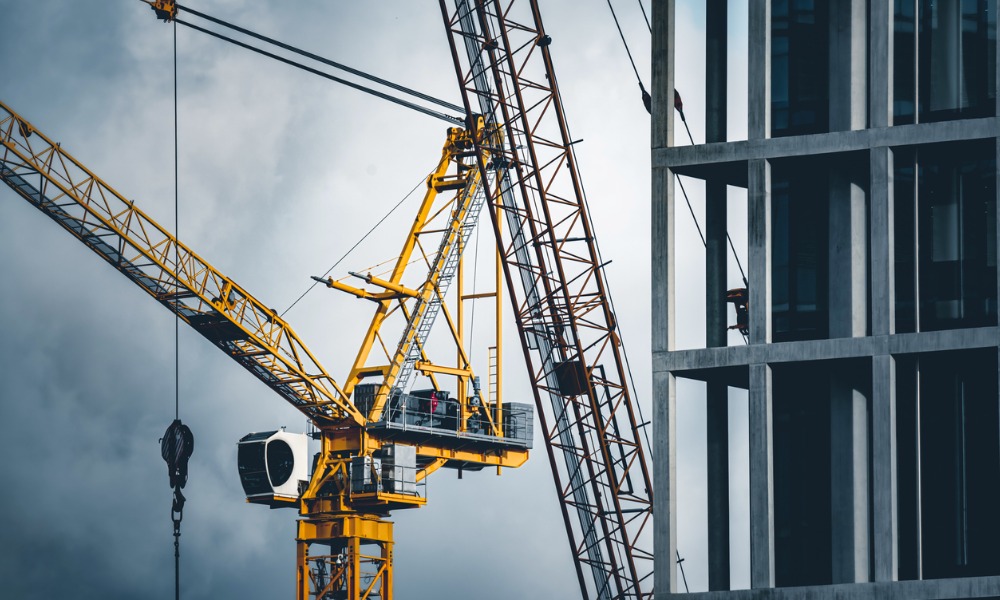Initiative aims to identify and eliminate unsafe work practices and equipment hazards, while employers must adhere to regulations

In late January, two separate crane incidents occurred in Metro Vancouver within a week of each other. Fortunately, there were no serious injuries.
These high-profile incidents have generated questions about crane safety in B.C., including what initiatives are underway to improve safety on worksites, and what the regulatory environment looks like for tower cranes.
Tower cranes in Canada
With the enormous demand for new housing units across Canada, tower cranes are becoming a more visible part of the urban landscape across the country. In B.C. alone there are currently about 350 tower cranes operating.
Tower cranes are essential pieces of equipment on construction sites, and they typically operate safely and without incident. However, tower cranes have the potential to create catastrophic risk to workers and the public. That’s why tower crane safety is a priority for WorkSafeBC.
Recent crane incidents
In both recent incidents in Metro Vancouver — which involved different tower crane activities — WorkSafeBC issued stop-use and stop-work orders at the sites and both incidents are now under investigation. The investigations will seek to identify the cause of the incidents, including contributing factors, so that similar incidents can be prevented from happening in the future.
These two incidents come as the 2021 Kelowna crane collapse continues to be top of mind for workers, industry, and the public in B.C. This tragic tower crane failure claimed the lives of five workers.
Crane safety
WorkSafeBC has stringent regulatory requirements for tower crane operation, as well as a dedicated crane safety initiative and inspection team that aims to identify and eliminate unsafe work practices and equipment hazards.
WorkSafeBC’s Provincial Crane Inspection Team has extensive experience and training in tower crane use. This team conducts proactive risk-based inspections across B.C. to ensure employers are effectively managing the key risks across all stages of tower crane use.
WorkSafeBC also works closely with BC Crane Safety to create resources for industry to ensure they understand tower crane erection, operation, inspection, and maintenance hazards, and how to comply with the Occupational Health and Safety Regulation.
Robust regulatory regime
Under the Workers Compensation Act, employers in B.C. are required to provide workers with the information, instruction, training and supervision necessary to ensure they can carry out their work safely.
And employers must follow specific regulations related to cranes and hoists in B.C., specifically Part 14 of the Occupational Health and Safety Regulation (OHSR).
- Crane operators must be qualified and certified to operate a tower crane. Sections 14.34 and 14.34.1 of the OHSR and their related Guidelines explain and guide all parties to crane operator qualification and certification requirements.
- In B.C., crane operator certification is administered through BC Crane Safety and SkilledTradesBC.
- Section 14.73.2 requires that the erection, climbing and dismantling of a tower crane must be done by qualified persons and in accordance with the instructions of the crane manufacturer, or a professional engineer if the installation varies from the manufacturer’s instructions.
- Effective March 1, 2023, regulations stipulate that a tower crane working in proximity to high voltage electrical equipment, or tower cranes with overlapping operating zones, must be equipped with a zone-limiting device to prevent collision. The regulations also require a professional engineer to supervise the inspection of equipment and certify the equipment as safe for use after both crane misadventures and contacts.
While recognizing these ongoing efforts, it’s crucial to acknowledge the need for continuous improvement. A regulatory amendment is now in progress requiring employers to submit a Notice of Project for tower crane erection, climbing, repositioning, and dismantling. A second proposed amendment aims to define "safe for use" in the context of certification after an annual equipment inspection.
With the proliferation of tower cranes across the province, maintaining and improving high safety standards remains paramount. WorkSafeBC, in partnership with key industry stakeholders and worker groups, will continue advancing safety initiatives and regulatory measures to ensure tower cranes remain a safe part of our urban landscape.
Doug Younger is a Manager of Prevention Field Services with WorkSafeBC





